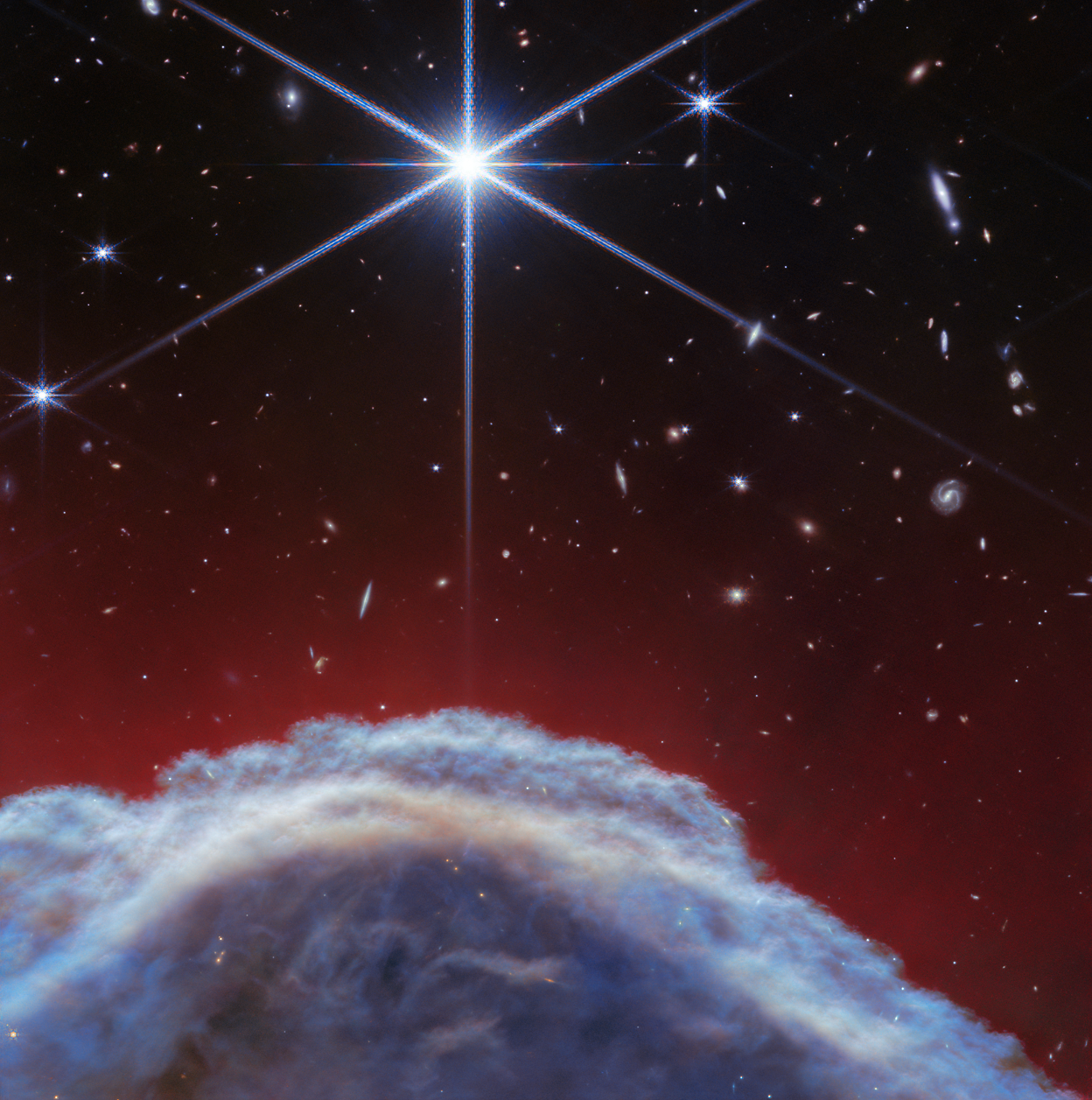Rising from turbulent waves of dust and gas is the Horsehead Nebula, otherwise known as Barnard 33, which resides roughly 1300 light-years away. The NASA/ESA/CSA James Webb Space Telescope has captured the sharpest infrared images to date of one of the most distinctive objects in our skies, the Horsehead Nebula. Webb’s new view focuses on the illuminated edge of the top of the nebula’s distinctive dust and gas structure.
This image of part of the Horsehead Nebula, captured by NASA’s James Webb Space Telescope and released on April 29, 2024, shows the nebula in a whole new light, capturing the region’s complexity with unprecedented spatial resolution. Located roughly 1,300 light-years away, the nebula formed from a collapsing interstellar cloud of material, and glows because it is illuminated by a nearby hot star. The gas clouds surrounding the Horsehead have already dissipated, but the jutting pillar is made of thick clumps of material and therefore is harder to erode. Astronomers estimate that the Horsehead has about 5 million years left before it too disintegrates.
Image Credit: NASA, ESA, CSA, K. Misselt (University of Arizona) and A. Abergel (IAS/University Paris-Saclay, CNRS)
从尘埃和气体的湍流中升起的是马头星云,也被称为巴纳德33,它位于大约1,300光年外。NASA/ESA/CSA的詹姆斯·韦伯太空望远镜拍摄到了迄今为止我们天空中最独特的天体之一马头星云的最清晰红外图像。韦伯的新视图聚焦于星云独特的尘埃和气体结构顶部被照亮的边缘。
这幅由NASA的詹姆斯·韦伯太空望远镜拍摄并于2024年4月29日发布的马头星云部分图像以全新的视角展示了该星云,以前所未有的空间分辨率拍摄到了该区域的复杂性。该星云距离我们大约1,300光年,由一个正在坍缩的星际物质云形成,由于受到附近一颗炽热恒星的照射而发光。马头周围的气体云已经消散,但突出的尘埃柱是由厚厚的物质团组成,因此更难侵蚀。天文学家估计马头星云在解体前还有大约500万年的时间。
影像来源: NASA, ESA, CSA, K. Misselt (University of Arizona) and A. Abergel (IAS/University Paris-Saclay, CNRS)







